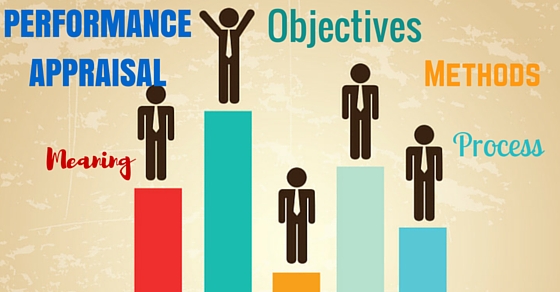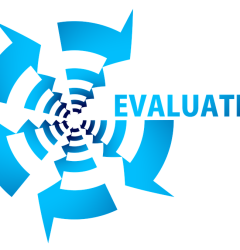11 Feb

|
If you are looking to deploy the right performance management system, here are the key pointers you must look into:
|
Introduction
Every employee’s individual performance contributes to the organization’s overall performance. That’s the reason more and more companies today are continually looking to improvise their techniques in measuring and evaluating employee performance. Employee performance management, therefore, becomes critical as it aligns the workforce and their individual goal with the broader organizational goals and mission.
“More than 80% of organizations are considering making a major change to performance management, or already have.” – Gartner, 2019
Earlier, companies used to rely on paper/spreadsheet-based performance reviews, once annually. But the paper/spreadsheet-based processes were cumbersome, not suited for mobile-driven millennials, and have limited capabilities for analytics. There used to be inherent bias and were seen as ‘ineffective’ by both the managers and the employees. Technology enabled with Chat interface, analytics, and AI stepped in to solve these inefficiencies; companies began to embrace technology—they shifted to performance management systems for employee appraisal and evaluation.
These new-age performance management systems helped organizations shift from broken paper-based/spreadsheet performance reviews to regular, frequent updates and feedback. However, choosing the right performance management software for an organization is not an easy job. The thought of a team struggling to work with an unknown, sophisticated software bought without clearly seeing tangible benefits is scary. That could make organizations want to move back to the traditional performance appraisal processes.
It is thus essential to invest in the process of selecting the correct/most suitable employee performance management software. We’ve created this buyer’s guide to help you go through the research and evaluation process. It’s packed with all the insights and advice on critical features to consider while choosing a system and more!
What is an Employee Performance Management System?
A performance management system is a system that designs and tracks the performance of employees periodically and measurably. It allows the company to monitor and ensure that the employees and departments across the organization are aligned in working towards achieving all the goals of the business. When employees are aligned with corporate goals, companies have a better chance of gaining success consistently.

Why is a proper Performance Management System important?
A PMS is crucial because it allows you to undergo a performance management process in a way that aligns individual employees’ performances with that of the organization. It not only measures it periodically but also delivers fair reviews about the progress. Besides, it makes tracking employee performance, identifying training requirements, and automating performance review reports easier.
The traditional methods of performance management systems heavily relied on the process of (at best) mid-year goal assessments and year-end performance reviews. Feedback is provided to employees only at the year-end and not regularly during the year. In contrast, with the modern PMS, one can evaluate performance periodically depending on their metrics of assessment. It can be monthly, bi-yearly, or quarterly and helpful in guiding employees to achieve their goals. You can even define an employee’s competencies and skills to track their development with the performance management system to achieve the targets.
Today’s working culture thrives on frequent constructive feedback and opportunities for growth. Modern workplaces need SMART Goals (S- Specific, M-Measurable, A- Achievable, R- Realistic, T- Time-bound) to contribute effectively to the organization’s goals. Regular measurement, frequent and constructive feedback, clear career development path, objective evaluation, etc. are some of the attributes essential in a modern performance management system. On the contrary, traditional PMS are annual, don’t provide alignment, and are perceived to be biased. However, 360-degree feedback from modern employee PMS helps you remove such irregularities to create an error-free workforce.

What are the pain points of your current Performance Management?
The obsolete process that many companies still work with doesn’t appropriately adapt to or support the new generation of the working environment. Since the traditional methods of performance management tend to run on an annual basis, there is not enough interaction between the employees and their managers. This leads to an ineffective evaluation, which tends to bring in ‘latency’ and ‘recency’ effect. Thus, an organization needs an employee performance management system that highlights regular coaching, mentoring, and performance measurement between the employees and their managers.
So, before you begin your quest for searching for the best team performance management system, you need to identify the pain points in the existing system in your organization and try to solve them.
Here are some of the common pain points that managers face in a traditional employee performance management system:
- Inability to course correct: When performance reviews are conducted annually or semi-annually, employees don’t get timely feedback during the period and therefore are unable to course correct. The annual or semi-annual feedback loses most of their relevance in terms of the outcomes.
- Poor rating system: Many organizations do not have the right criteria or metrics to rate their employees’ performance and assess the achievement of their tasks. This typically leads to both the managers and the employees not to trust the ratings as it may not capture the parameters that actually define the performance.
- Inapt targets: Setting up the right targets & objectives is both science and art. They need to involve the right level of stretch, which should be achievable but not too easy. They should be challenging enough to get the best out of the employees as well as align with what the organization sets out to achieve. Often, the link between the individual effort and the company objectives gets diluted as the targets and metrics differ.
- Lack of transparency: Employees need to believe that the performance management system is fair to everyone and is based on fair rules applicable to everyone. Traditional systems suffer from many lacunae, which make them look opaque.
- Lack of engagement: Interacting with the personnel is an extremely powerful way to showcase the dynamic personality of a company. Lack of engagement results in low productivity in addition to other problems.

What process should one follow?
There will be key investors, stakeholders, and decision-makers who should be a part of this process to ensure that you have considered all the problems they face with the existing performance management system.
What you can do is list out all the stakeholders by name, department, title, and their role in the decision-making process. Then, list the difficulties they face while managing employee performance activities. Make sure that there is a clear outline of what the new performance review software is expected to do by all these people, and reach a collective agreement on which problems need to be solved with the new system.
It is important to categorize these by ‘need-to-have’ and ‘nice-to-have’ features of the system. That will help you ensure which are the most critical aspects of the methods that should be included as no solution will be able to solve every challenge on a day-to-day basis.
Lastly, make sure that the business case for the new employee performance management system is drawn crystal clear. You’ll need to show that the problems you and other key people have laid out are affecting the actual performance of the employees. Include metrics to illustrate your points effectively so that you can get to choose the right performance management system.

What features should a Performance Management System offer?
Today, an employee needs a platform on which they can receive constructive feedback on an ongoing basis to help them achieve their yearly goals. Their supervisors need to assess the tasks and provide regular feedback on how employees can improvise their work. An employee performance management system should have the ability to interpret the data submitted by the employee about their performance and also initiate interactive conversations between the employees and their supervisors whenever needed by either.
Additionally, an employee performance platform should contain the following elements at the least:
Basic Functions
- Set up team and individual goals
- Collect performance reviews
- Conveniently collect appraisal information
- Export performance data
- Inform managers about performers
Unique Functions
- Adjust and manage goals
- Allow task feedback from managers
- Real-time progress updates
- Visual representation of goals progress
- Social collaboration elements
- 360 performance reviews and feedback
- Customizable review workflows
- Reporting capabilities
- Compensation planning tools or integrations

What are the other deciding factors to consider when investing in a Performance Management System?
Because almost everyone in the organization would use the new system, you will need to ask yourself specific questions to evaluate before investing in an employee performance management system. So, make sure to consult the rest of your team and also consider taking advice from the other departments who will be affected by your purchasing decision.
Here are some of the deciding factors that you should consider:
Performance Database
This performance management system will be responsible for tracking and monitoring essential performance data of all the employees of your organization. Hence, you will need to know where the system and the data are being hosted and ensure that you can access it whenever you need and in whatever format you need.
Ask the following questions:
- What is the system hosted on, and is the data accessibility fast, reliable, and scalable?
- How is data exported, and can it integrate into other systems?
- What security measures does the system provide to protect employee data, and can role-based access be provided?
Software Flexibility
Every performance management process is a little different than others available in the market, and it can be challenging to really know if the one you choose can really accommodate all the unique features that your company needs. Hence, before you take a demo of their PMS, send an example of how your review report looks like and tell them to personalize it with your needs to see if they can do it to check their software’s flexibility.
Ask the following questions:
- Can I see how to program a review in your PMS?
- Can I create my own response scales?
- How does the system notify or remind employees that a review cycle is open? Can I make changes to those notifications?
- What does the review look like once it is completed? How can I format the data?
Training & Support
Beforehand training for the system is a must, but ongoing training also needs to be considered as new employees will keep joining the system after the system is set up. Is this something the system will provide through customer support, or does it have to be managed internally?
Ask the following questions:
- Do you have the budget, bandwidth, and resources to manage training internally, or do you need the system to provide ongoing training support?
- What level of training is required for the various roles within your organization, and does the system provide the level of granularity you need?
- What level of ongoing support will the vendor provide for implementing changes in the future?
Ease of Use
Most importantly, when you look for all these above features in a PMS, you also need to look for what kind of experience it provides to you, your organization, or your employees. Please ask the following questions:
- How user-friendly is it? Does it give a better user-experience than the rest?
- Is the customer support chat option human-based or AI-based?
- Does it have an easy-to-use user interface?

Final Thoughts
Identifying the challenges within your organization that are tied to employee performance management, drawing out the stakeholder’s concerns, building a business case for a new performance management system, assessing the need-to-have and nice-to-have features of today and tomorrow, deciding the vendor as a service provider are all critical components of the buying process. This buyer’s guide will make you think about all of the long-term aspects that will go into making such an important decision to purchase an employee performance management system. We hope it helps in making the right decision in choosing what’s the best in the market.



